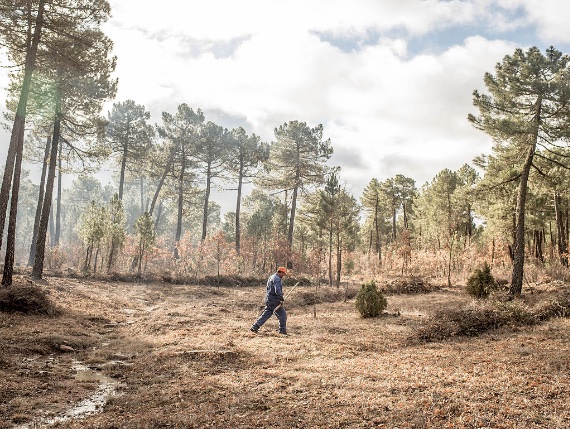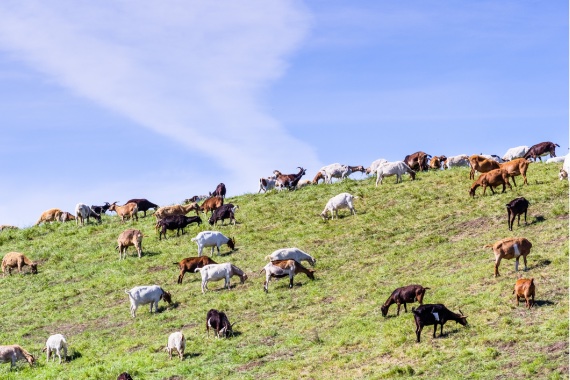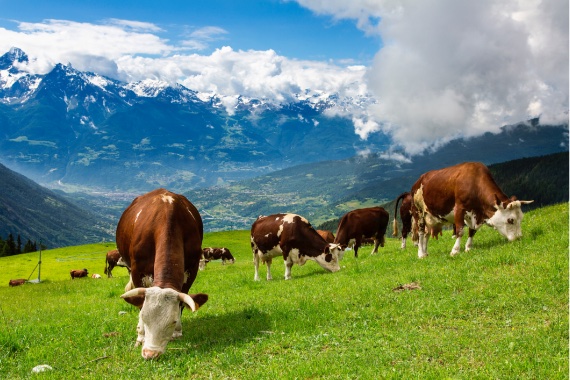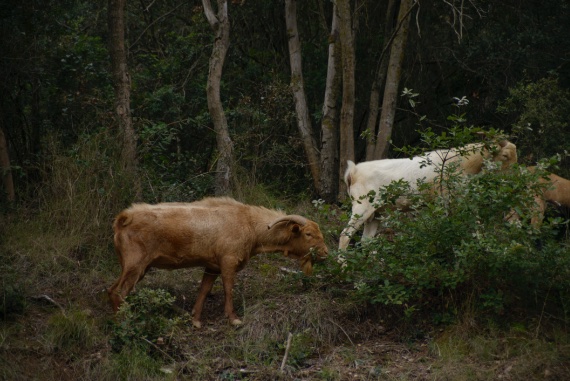They do what comes naturally to them—head for the undergrowth—and while there they clean it up, removing the excess biomass and saving it from charring if the big fires return. Their benefits are so great that any investment in firefighting animals seems worthwhile. Indeed, some herds, now GPS-controlled, are profitable only because of their sound business model, and are being used from Spain and Portugal to the United States and Israel.
Goats have taken over as the representative species that puts out wildfires before they have a chance to start. Of course, there are also firefighting sheep, cows and horses, and in some countries such as Spain even donkeys are used, as is the case in the Doñana National Park in Andalusia. But the goat is the emblematic animal and the most widely used because of its enormously varied diet and its ability to climb and make its way through thickets that are impenetrable to humans, no matter how good a firefighter they may be. In a nutshell, the goat is the G.O.A.T.
Goats are found grazing on undergrowth across the globe. An example of their use in fighting fires in Spain can be seen in the Canary Islands. On the island of Gran Canaria, some 8,000 goats and sheep in the care of 41 shepherds clear 8,000 hectares of undergrowth, particularly in ravines, which turn into blast furnaces when a blade of grass catches fire. The local government has calculated the cost of using goats to clear the land and save it from the flames at around 180 euros per hectare, compared to 1,000 euros for a brush-clearing crew. It says that in the big fires on the island in 2017 and 2019, the fires stopped dead in the grazed areas. The Spanish National Research Council arrives at similar figures—goat herds are 75% cheaper.

But business models based on this system have also been devised. One of them is that of a goat herder, who travels around the American west in a truck camper and trailer in which she transports her herd to the communities that need her services, helping the recovery of areas devastated by wildfire and preventing new fires, according to The New York Times.
And in Israel, research by the Open Landscape Institute (OLI) of the Steinhardt Museum of Natural History at Tel Aviv University seeks to expand and encourage goat herding in Israel for fire prevention in areas where plant growth is dense.
Since 2014, goat herds have also been used for wildfire prevention in some areas of the United States. In West Sacramento, California, for example, herds are responsible for clearing brush and tall grass in potentially flammable areas, as The Washington Post explains. This creates firebreaks, open space that can help stop a fire in its tracks. Anecdotally, in the same state, goats helped save the Ronald Reagan Presidential library, according to BBC News, and are being used as a weapon against the wildfires that often ravage the state of California.
The goat, and the herbivorous firefighter in general, seem to offer nothing but benefits. “Experience and academic literature in Spain and Europe show that it is a key management model for preventing BFFs, the Big Forest Fires,” explains Guillem Armengol, a project technician at the Pau Costa Foundation. “The herds are essential allies in maintaining a dynamic, lively, heterogeneous landscape with agricultural fields, pastures, open spaces and forests, more resilient to the BFFs that the future will surely bring.”

Tidying up and clearing the undergrowth, similar to the effect of pruning, “allows the plant structure to diversify, and with it the biodiversity, as well as improving the properties of the soil,” explains the expert. We were talking about the versatility of goats, which is enhanced in mixed herds. Goats eat grasses as well as shoots and woody parts; they are multi-taskers and more rugged than sheep. But goats and sheep need shepherds and dogs, which could cause friction in a forest area with lots of tourists and hikers, in which case donkeys or horses can be used to consume the biomass.
Another Spanish study, this time from the University of Valladolid, provides a surprisingly detailed account of this specialist function. Cows, for example, can eat 20 to 30 kilos of dry, combustible grass a day. They can therefore be useful in open areas, and even in firebreaks, which lose their effectiveness and become corridors for flames when grass grows out of control due to lack of upkeep. The study specifies an average of two goats per hectare of woodland, whereas a horse can maintain ten hectares and remove straw and thorny thistles, which are highly flammable when they dry out.
Grazing controlled by GPS
The mixed species concept also includes humans. Animals are teaming up with firefighters and forest managers, and herds are now fitted with GPS to manage grazing by quadrant. Clearing and restoring paths and tracks allows people to reach places where the tangle of vegetation has prevented them from going, for example to access water sources.
Spanish authorities are well aware of this list of benefits. It is estimated, for example, that there are around 32,000 goats and sheep dedicated to this task in Andalusia, and around 19,000 in Madrid, including horses and cows. Why then do wildfires still occur, particularly devastating ones like the one in the Sierra de la Culebra, in the Autonomous Community of Castilla y León, which scorched 15,000 hectares in a single night?

There are several reasons. Greenpeace points firstly to a warming with “extreme temperature events,” which affected just 0.1% of the planet’s surface last century, but in 2021 reached 22% and rising. In the 20th century, summer fires used to be extinguished the previous spring, when the vegetation that would become tinder was born, but now this preventive grazing must take place all or almost all year round.
The image of a scenic spot with its grazing goats may be bucolic, but the business is not. Goats are both hardy and delicate, and their care requires knowledge, vocation and dedication—a 24/7 job with little generational turnover. Farmers have to invest in the purchase of animals, in adequate facilities, veterinary care, supplementary feed, transport and unforeseen events such as infectious diseases. And then they hope to earn it back through the sale of milk, cheese, meat or wool. This is why so many projects have failed due to a lack of support or planning.
Another tool in the struggle against rural depopulation affecting many countries
It is a paradoxical problem: the depopulation of the countryside is a tragedy in many countries, as is the proliferation of wildfires, but there are not enough incentives for this business/livestock activity to alleviate both. Armengol believes it is essential to allocate “economic compensation, not subsidies, to shepherds for the environmental services they provide to society as a whole, such as carbon retention, improving water dynamics and nutrient recycling, as well as fire prevention.” And beyond that, “preserving traditional values and activities as well as boosting rural areas and their economy.”

But how? The Pau Costa Foundation is developing a programme, Ramats de Foc (Herds of Fire), that offers some clues. At the very least, its gradual spread across the Catalan mountains suggests an economic sustainability that contributes to environmental sustainability. In essence, it builds community around a common goal. It brings together a whole network of livestock farmers, small businesses (butchers, shops, craft workshops, restaurants, bars…) and consumers to support fire prevention by making the herds profitable thanks to a fair price for their products, with a label and a seal that make them an appetising attraction for consumers who are concerned about saving the forest.
According to Armengol, the concept is perfectly replicable and just needs to be adapted to the environmental, social and economic context of each area. Medium- and long-term viability will depend not on the goats, but on the people, on how shepherds, livestock farmers, local businesses and the local government work together. “Trust, will and commitment, that’s what it takes.”v
Juan Pablo Zurdo
Comments on this publication